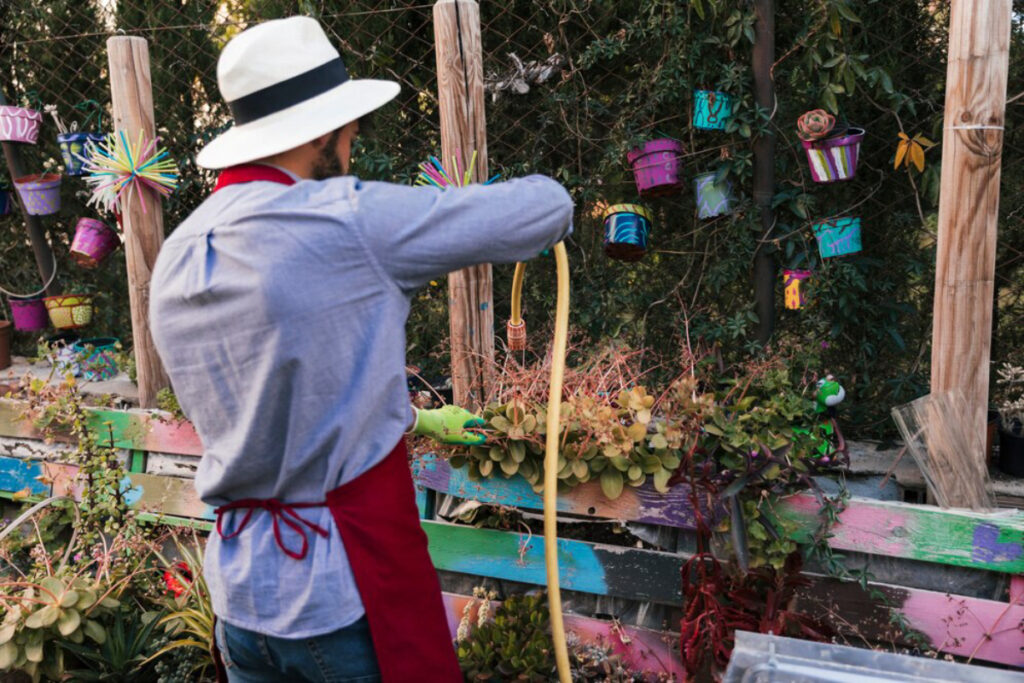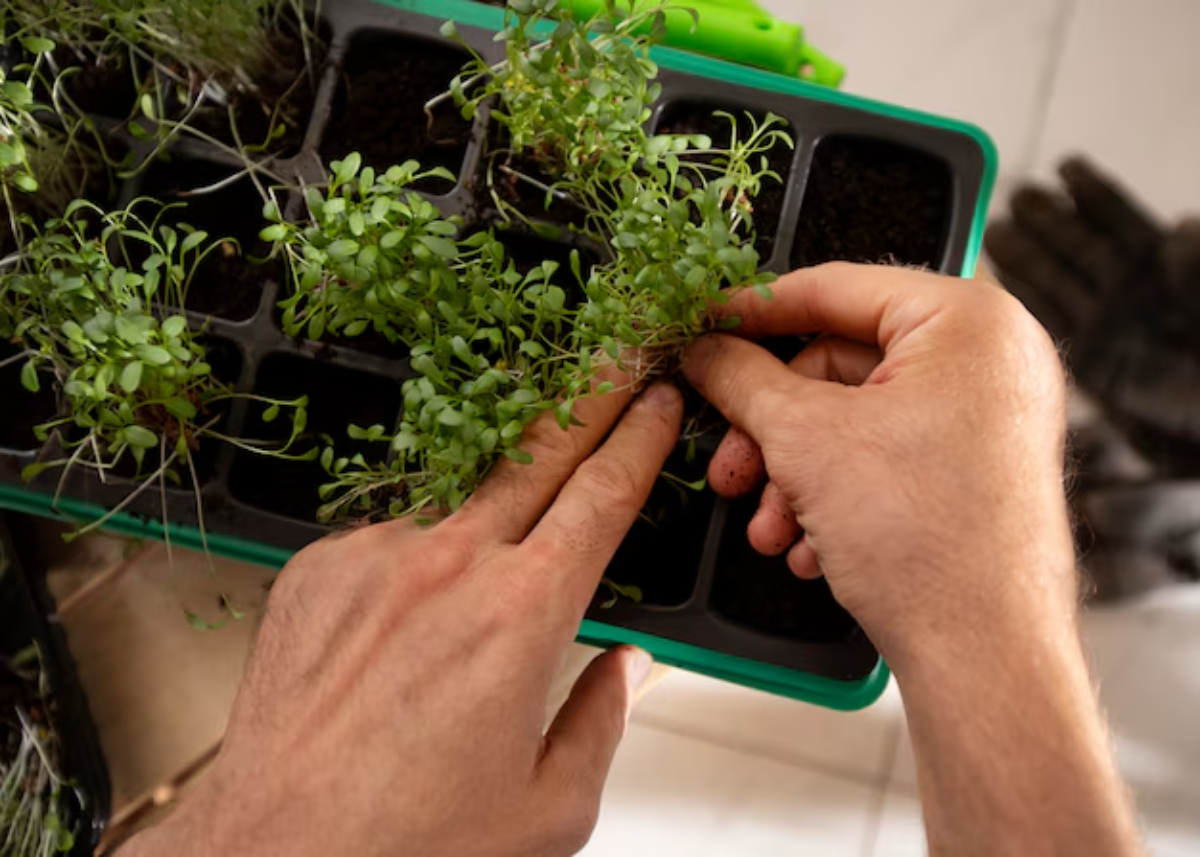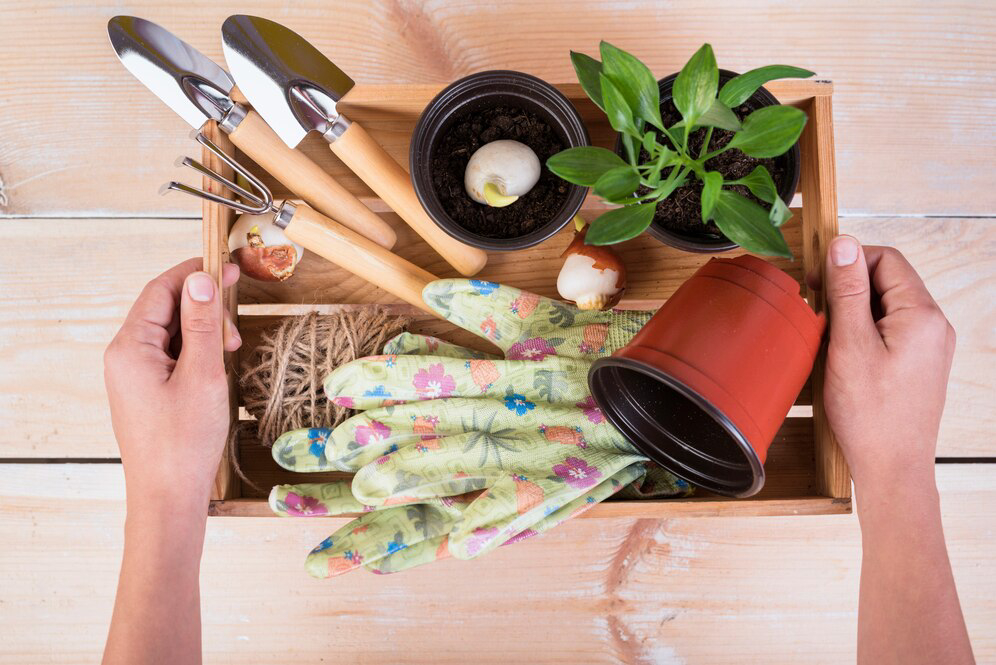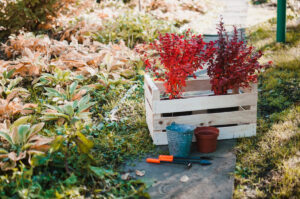The DIY & Crafts Blog

How to Make a Vertical Garden from Repurposed Items
Vertical Gardens Made at Home — A smart way to be green in small spaces, as this vertical DIY garden can be made with wasted materials. Whether you reside in a small apartment or have a big backyard, vertical gardens offer a smart way to grow plants without requiring much space. With these upcycled plant stands and other reused materials, you can build a fabulous green area while being kind to your wallet.
You can turn everything old and unused into creative gardening ideas if you like. Get inspired by old ladders, wooden pallets, and much more. This guide will discuss the benefits of vertical gardening, the materials you will need, and step-by-step methods for creating a beautiful vertical garden that meets your space and style.
Why Choose a Vertical Garden?

1. Maximises Space
- Ideal for small balconies, patios, or backyards.
- It uses vertical structures to grow more plants in less space.
- Frees up ground space for other garden features or seating.
- Allows for easy access to plants for watering, pruning, and harvesting.
2. Eco-Friendly and Sustainable
- Encourages the use of repurposed materials, reducing landfill waste.
- Reduces water usage by concentrating irrigation in a smaller area.
- It improves air quality and promotes biodiversity by attracting pollinators like bees and butterflies.
- It helps regulate indoor and outdoor temperatures by providing natural insulation.
3. Adds Aesthetic Value
- Enhances outdoor spaces with lush greenery and vibrant flowers.
- Allows for custom designs using upcycled plant stands and planters.
- Creates a stunning focal point in gardens, patios, or balconies.
- It can serve as a natural privacy screen or decorative wall feature.
Best Materials for an Upcycled Vertical Garden

Using repurposed materials saves money and gives your garden a unique, rustic charm. Here are some excellent materials to consider:
- Wooden Pallets – Perfect for mounting on walls or standing upright as a plant display.
- Old Ladders – An excellent stand for potted plants, herbs, or flowers.
- Hanging Shoe Organisers – Great for planting herbs and flowers in small pockets keeping plants organised.
- Gutters – These can be attached to fences or walls to create layered planters for strawberries, lettuce, or succulents.
- Tin Cans & Plastic Bottles – Simple, effective, and perfect for small herb gardens or trailing plants.
- Mason Jars & Glass Bottles – Stylish options for displaying small plants or creating hydroponic herb gardens.
- Repurposed Bookshelves – A sturdy option for stacking plants at different heights while maintaining structure.
- Old Drawers & Crates – These can be mounted on walls or placed on the ground for an upcycled planter effect.
Creative DIY Vertical Garden Ideas
1. Pallet Planter Wall
A wooden pallet can be easily converted into a stunning DIY vertical garden for flowers, succulents, or herbs.
Steps:
- Sand down the pallet and remove any nails or splinters to ensure safety.
- Attach landscape fabric to the back and bottom of each row to hold soil and prevent leaks.
- Fill with nutrient-rich potting mix and plant herbs, flowers, or small vegetables.
- Secure the pallet against a wall or fence for stability, or lean it against a sturdy surface.
- Water regularly and enjoy your space-saving green wall that adds life to any area.
2. Ladder Plant Stand
An old wooden or metal ladder can be transformed into a stylish upcycled plant stand, making it easy to arrange multiple plants.
Steps:
- Clean and repaint the ladder for a fresh look and added durability.
- Place wooden planks across the steps to create stable shelves for pots.
- Arrange potted plants on each level for a cascading garden effect.
- Place the ladder against a wall or fence for extra support, especially in windy areas.
- Use a variety of plant heights, colours, and textures to create visual appeal.
3. Hanging Bottle Garden
When arranged creatively, plastic bottles or glass jars make excellent upcycled planters, perfect for small herbs or decorative flowers.
Steps:
- Cut the top off plastic bottles or drill holes in glass jars for proper drainage.
- Attach sturdy string or wire to hang them from a fence, balcony railing, or hooks.
- Fill with potting soil and plant herbs, flowers, or succulents that thrive in small containers.
- Arrange bottles at varying heights to create an eye-catching, cascading display.
- Water carefully to avoid over-saturating the plants, ensuring proper drainage.
4. Gutter Planters on a Fence
Old rain gutters can be mounted to a fence or exterior wall to create a multi-tiered DIY vertical garden, perfect for growing leafy greens, strawberries, or cascading flowers.
Steps:
- Cut gutters to the desired length based on the space available.
- Drill small drainage holes along the bottom to prevent waterlogging.
- Secure them to a fence or exterior wall using brackets and screws.
- Fill with high-quality soil and plant herbs, strawberries, lettuce, or small flowers.
- Water regularly and enjoy an organised, productive garden in a compact space.
5. Shoe Organiser Herb Garden
A hanging shoe organiser is an unexpected yet brilliant way to grow fresh herbs, ideal for urban gardening or balconies.
Steps:
- Find a sturdy fabric shoe organiser with multiple pockets that can hold soil.
- Attach it securely to a wall, fence, or balcony railing using strong hooks or nails.
- Fill each pocket with soil and plant a different herb, ensuring easy access for cooking.
- Water carefully to prevent excess moisture buildup in the fabric pockets.
- Enjoy easy access to fresh herbs like basil, parsley, and mint whenever needed.
Tips for Maintaining a Vertical Garden
- Choose the Right Plants: Opt for lightweight, shallow-rooted plants like herbs, succulents, and small flowers that thrive in vertical settings.
- Ensure Proper Drainage: Drill holes in containers or use well-draining soil to prevent root rot and excess moisture buildup.
- Water Efficiently: Use a drip irrigation system or self-watering planters to maintain consistent moisture levels without overwatering.
- Monitor Sunlight Exposure: Place your vertical garden in an area that receives adequate sunlight based on plant needs to ensure healthy growth.
- Secure Your Structures: Ensure wall-mounted or hanging planters are stable and can support the weight of soil, plants, and water.
- Rotate Plants Seasonally: Swap plants based on the growing season to keep your garden fresh, productive, and visually appealing.
- Fertilise Regularly: Use organic compost or slow-release fertilisers to keep plants healthy and thriving.
- Pest Control: Watch for common garden pests and use natural deterrents like neem oil or companion planting techniques.
Conclusion: Transform Your Space with a DIY Vertical Garden
Building a vertical garden from plant stands and other recycled materials by making it yourself is a great way to add some greenery to any space while saving money and the planet. Gardening ideas can be anywhere, but you don’t know if they use an old ladder, wooden pallet, or hanging bottles.
A vertical garden doesn’t just beautify the outdoor (or indoor) space; it helps reduce waste and encourages eco-friendly living. So collect some materials that can be repurposed, get a bit creative, and begin your DIY vertical garden.
Do you have a favourite upcycled gardening project? Share your ideas in the comments below and inspire others to embrace sustainable gardening!









